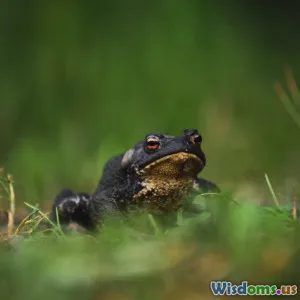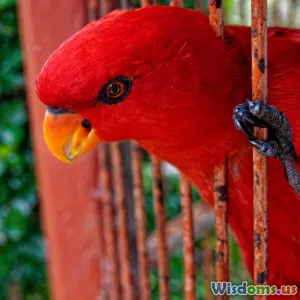
Why Genetic Drift May Impact Species Survival
7 min read Explore how genetic drift influences species survival and biodiversity amidst evolving environmental challenges. (0 Reviews)
Why Genetic Drift May Impact Species Survival
In the theatre of evolution, much attention is given to natural selection as the dominant force guiding species adaptation and survival. However, a subtler, often overlooked mechanism—genetic drift—can wield profound influence on a species’ fate. Unlike natural selection, which is directional and often adaptive, genetic drift operates by pure chance, shaking up gene frequencies in populations with lasting consequences. Understanding why genetic drift impacts species survival is vital to grasping evolutionary biology and informing conservation strategies.
What Is Genetic Drift?
Genetic drift refers to random fluctuations in the frequency of alleles (variants of a gene) in a population over successive generations. These changes occur independently of any selective advantage or disadvantage and can drastically alter genetic diversity, especially in small populations.
To illustrate, imagine a population of beetles with red and green coloration genes. If, by random chance, more red beetles reproduce in one generation, the frequency of red alleles increases, not because red is more adaptive, but simply by chance. Over time, this leads to the fixation or loss of specific alleles—entirely by luck.
Why Does Genetic Drift Matter for Species Survival?
1. Reduction in Genetic Diversity
Genetic diversity is a cornerstone of a species' ability to adapt to environmental changes such as disease, climate shifts, or competing species. Drift can reduce this diversity by randomly eliminating certain alleles. For example, the Northern Elephant Seal suffered a massive population bottleneck in the 19th century due to hunting, reducing their population to as low as 20 individuals. This caused severe loss of genetic variation through drift, raising concerns about their long-term resilience despite current population recovery.
2. Increased Vulnerability to Environmental Changes
Without sufficient genetic variability, a population might lack critical alleles needed to survive changing environments or new pathogens. Studies on cheetahs reveal extremely low genetic variability attributed partly to past bottlenecks and drift, making them susceptible to disease outbreaks and reproductive problems.
3. Fate of Deleterious Alleles
Contrary to natural selection, which tends to weed out harmful alleles, genetic drift can randomly fix detrimental mutations in a population. This 'genetic load' weakens the overall health and reproductive success of the species, increasing the risk of extinction.
4. Influence on Evolutionary Pathways
Genetic drift can steer evolution along unpredictable paths, especially in isolated populations. Founder effects, a special case of drift occurring when a small number of individuals colonize a new habitat, can produce unique genetic combinations unrelated to environmental selectivity. An example is the Amish population in the United States, exhibiting unusual frequencies of rare genetic disorders due to founder effects and ensuing drift.
Population Size: The Critical Variable
Genetic drift's impact is inversely proportional to population size. In large populations, the relative effect of random sampling errors is negligible; however, in small or fragmented populations, the effect can be profound. Conservation biologists often face the challenge of mitigating drift-induced losses, emphasizing strategies to maintain large effective populations.
Real-World Insights and Conservation Implications
Genetic Drift in Conservation Efforts
Conservationists advocate for preserving not just species count but also genetic diversity. Captive breeding programs must carefully manage mating pairs to avoid drift-induced genetic bottlenecks. The Florida panther, down to fewer than 30 individuals in the 1990s, faced inbreeding depression magnified by drift until genetic restoration was attempted by introducing Texas cougars.
Climate Change and Drift
With accelerating habitat loss and fragmentation due to climate change, more animal populations are becoming isolated and diminishing in size, increasing drift's role. For species such as amphibians facing rapid environmental decline, genetic drift further threatens adaptability.
Genomics and Future Research
Advances in genomic technologies have allowed researchers to quantify and monitor genetic drift in wild populations accurately. Studies on island species, like Darwin’s finches, demonstrate how drift combined with selection shapes evolutionary trajectories.
Conclusion
Genetic drift is a silent yet powerful evolutionary force impacting species survival. By reshaping genetic diversity in unpredictable ways, especially within small or endangered populations, drift influences resilience and adaptability. Recognizing and mitigating its effects through informed conservation practices is imperative in a world facing explosive environmental change. Beyond natural selection, the chance-driven cadence of genetic drift reminds us of evolution’s complexity and the fragility of life’s delicate balance.
As we strive to protect biodiversity, integrating genetic understanding will enhance conservation outcomes and help safeguard humanity’s natural heritage for generations to come.
References:
- Frankham, R. (2005). Genetics and extinction. Biological Conservation, 126(2), 131-140.
- Hedrick, P. W. (2011). Genetics of populations. Jones & Bartlett Publishers.
- Avise, J. C. (2000). Phylogeography: The History and Formation of Species. Harvard University Press.
Rate the Post
User Reviews
Popular Posts





















